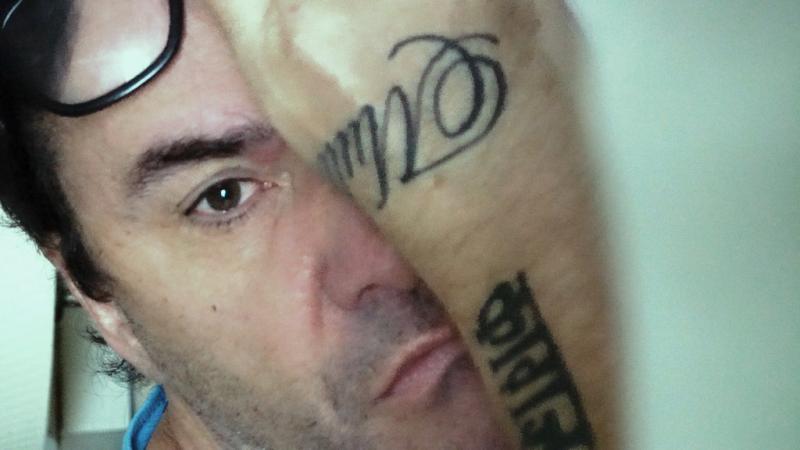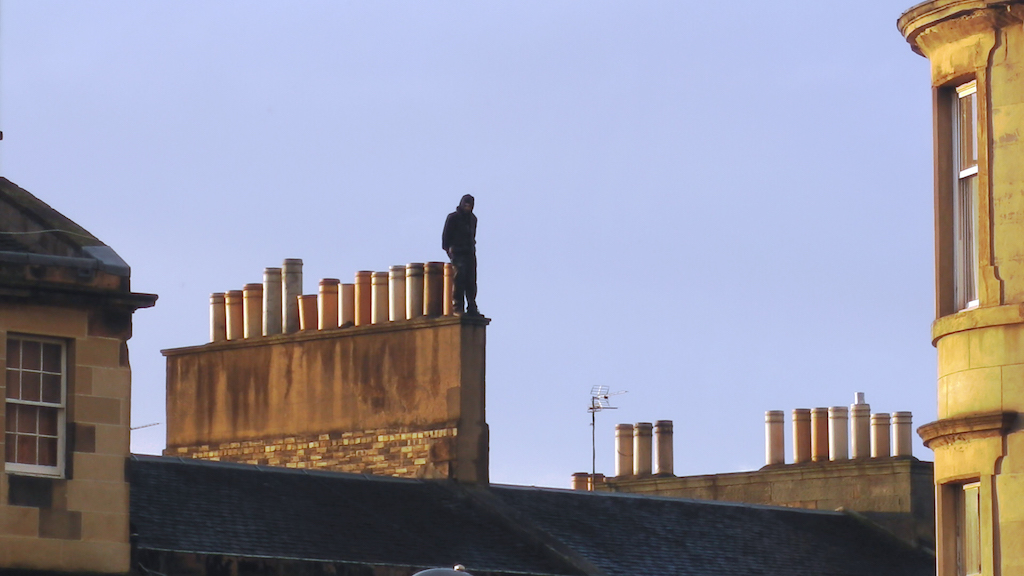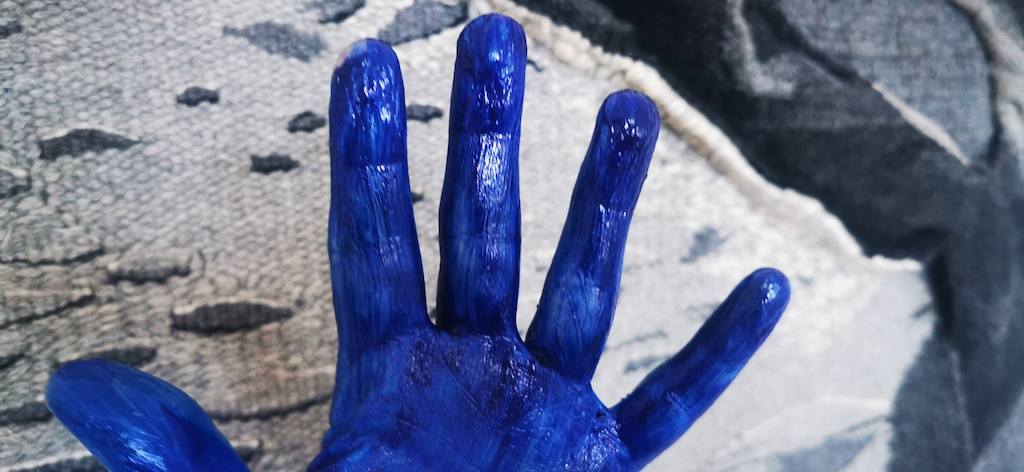The Story of Looking review – bedside musings on how and what we see | reviews, news & interviews
The Story of Looking review – bedside musings on how and what we see
The Story of Looking review – bedside musings on how and what we see
A lifetime of looking recalled in words and pictures

Mark Cousins, the multi-award winning director of this strange film, is lying in bed watching Ray Charles speaking on the Dick Cavett Show in 1972. The singer went blind in childhood; how would he respond if offered the chance to see again? “I might turn it down,” says Charles.
“For somebody like me who has always loved looking,” remarks Cousins, “what he says is unbelievable… Looking has been my joy, my world.” He is trying to decide whether or not to get up; tomorrow he has an appointment that is making him anxious. ”Someone is going to cut into my left eye, suck out the lens that I was born with and add in a plastic one,” he explains. What if things go wrong? This horrible thought prompts him to reflect on the importance for him of seeing. “I’d like to tell a story about our looking lives,” he says, and this quirkily intimate film is the result. His friend Michael Ewins sends a tweet: “To make a film you have to get up!” it says, but Cousins has already opted for a bedside chat. His darkened bedroom is a good place to imagine what he might see if he went outside and to remember things encountered in a lifetime of looking. He glances out of the window, though, to see a tree that provides a comforting sense of continuity, but also a man standing on a chimney stack, as if contemplating suicide (pictured above).
His friend Michael Ewins sends a tweet: “To make a film you have to get up!” it says, but Cousins has already opted for a bedside chat. His darkened bedroom is a good place to imagine what he might see if he went outside and to remember things encountered in a lifetime of looking. He glances out of the window, though, to see a tree that provides a comforting sense of continuity, but also a man standing on a chimney stack, as if contemplating suicide (pictured above).
He returns to bed and what follows is an apparently off-the-cuff ramble around the subject starting with the blur of infancy. Cue beautiful footage of misty landscapes, Venice in the fog, a Japanese painting of ghostly pine trees, a Turner seascape and the final frames of Billy Wilder’s Sunset Boulevard in which focus is pulled to dramatic effect. Cousins links the images together with observations delivered in a soft Irish brogue that are brief but insightful.
Topics such as motion, making or avoiding eye contact, light and self-regarding adolescence are given similar treatment while colour sees the painter Yves Klein “signing” the Mediterranean sky with blue fingers (pictured below). The experience is fascinating – like rifling through pictures stored in the director’s brain – and I could watch for hours.
Voyeurism comes next. We see Giuseppe Cesari’s painting of Diana and Actaeon (1603). The hunter has stumbled into a grove where Diana, goddess of the hunt, is bathing with her nymphs. To punish his trespass she turns him into a stag so that his hounds will tear him to pieces. “Is that what we are when we look,” asks Cousins. “Stags?” And I’m dismayed; his question suggests total misunderstanding of Ovid’s story. The stag is not a symbol of voyeurism, as he seems to think, but of the reversal of normal power relations – the predator reduced to prey, the hunter hunted down. Now we see Cousins floating in shallow water. “I’m the opposite of the goddess Diana; I don’t mind being seen naked,” he says. “Does that make me an exhibitionist, or an object in your eyes? Does it make you a voyeur, a stag?” I’m astonished at his naivety in comparing his peaceful solitude with the invasion of Diana’s privacy. Is he really unaware of the gender politics of voyeurism and its routine deployment as a weapon – a way of objectifying and repressing women? In fact, lust, sexual obsession and sexual violence don’t seem to figure in his universe, despite the fact that films are his main point of cultural reference and they are rife with all three, with the male gaze being a crucial factor in all of them.
Now we see Cousins floating in shallow water. “I’m the opposite of the goddess Diana; I don’t mind being seen naked,” he says. “Does that make me an exhibitionist, or an object in your eyes? Does it make you a voyeur, a stag?” I’m astonished at his naivety in comparing his peaceful solitude with the invasion of Diana’s privacy. Is he really unaware of the gender politics of voyeurism and its routine deployment as a weapon – a way of objectifying and repressing women? In fact, lust, sexual obsession and sexual violence don’t seem to figure in his universe, despite the fact that films are his main point of cultural reference and they are rife with all three, with the male gaze being a crucial factor in all of them.
Nor does he discuss the use of looking as a mechanism for social control. There’s no mention, for instance, of the ubiquity of surveillance and facial recognition cameras in public places. To be fair, though, he has run out of time and he acknowledges the gap. “I wanted to talk about politics and adulthood today,” he says, “but instead I’m starting to feel afraid. I don’t want someone to stick a knife into my left eyeball tomorrow.”
The next day’s filming sees a dramatic change in emphasis. We witness the operation in detail, see clips of movies playing in Cousins’ head and encounter various theories about human vision. Some time later, when he tears off the eyepatch and realises that his eyesight is intact, he is visibly moved. As if the emotion is too intense to explore, though, we switch to a future where the director is an old man living in Sweden. This inexplicable shift feels fortuitous and, after the pillow talk of the first section, shockingly removed. Over a seemingly interminable shot of seaweed drifting in the current, Cousins concludes “I realise Ray Charles was wrong. We don’t put up with what we see. It isn’t a burden; it’s the opposite.” And so the film simply fizzles out, leaving you feeling frustrated and in danger of forgetting all the riches you’ve encountered along the way.
rating
Explore topics
Share this article
The future of Arts Journalism
You can stop theartsdesk.com closing!
We urgently need financing to survive. Our fundraising drive has thus far raised £49,000 but we need to reach £100,000 or we will be forced to close. Please contribute here: https://gofund.me/c3f6033d
And if you can forward this information to anyone who might assist, we’d be grateful.

Subscribe to theartsdesk.com
Thank you for continuing to read our work on theartsdesk.com. For unlimited access to every article in its entirety, including our archive of more than 15,000 pieces, we're asking for £5 per month or £40 per year. We feel it's a very good deal, and hope you do too.
To take a subscription now simply click here.
And if you're looking for that extra gift for a friend or family member, why not treat them to a theartsdesk.com gift subscription?
more Film
 Urchin review - superb homeless drama
Frank Dillane gives a star-making turn in Harris Dickinson’s impressive directorial debut
Urchin review - superb homeless drama
Frank Dillane gives a star-making turn in Harris Dickinson’s impressive directorial debut
 Mr Blake at Your Service review - John Malkovich in unlikely role as an English butler
Weird comedy directed by novelist Gilles Legardinier
Mr Blake at Your Service review - John Malkovich in unlikely role as an English butler
Weird comedy directed by novelist Gilles Legardinier
 Don't Let's Go to the Dogs Tonight review - vivid adaptation of a memoir about a Rhodesian childhood
Embeth Davidtz delivers an impressive directing debut and an exceptional child star
Don't Let's Go to the Dogs Tonight review - vivid adaptation of a memoir about a Rhodesian childhood
Embeth Davidtz delivers an impressive directing debut and an exceptional child star
 One Battle After Another review - Paul Thomas Anderson satirises America's culture wars
Leonardo DiCaprio, Teyana Taylor, and Sean Penn star in a rollercoasting political thriller
One Battle After Another review - Paul Thomas Anderson satirises America's culture wars
Leonardo DiCaprio, Teyana Taylor, and Sean Penn star in a rollercoasting political thriller
 Steve review - educator in crisis
Cillian Murphy excels as a troubled headmaster working with delinquent boys
Steve review - educator in crisis
Cillian Murphy excels as a troubled headmaster working with delinquent boys
 Can I get a Witness? review - time to die before you get old
Ann Marie Fleming directs Sandra Oh in dystopian fantasy that fails to ignite
Can I get a Witness? review - time to die before you get old
Ann Marie Fleming directs Sandra Oh in dystopian fantasy that fails to ignite
 Happyend review - the kids are never alright
In this futuristic blackboard jungle everything is a bit too manicured
Happyend review - the kids are never alright
In this futuristic blackboard jungle everything is a bit too manicured
 Robert Redford (1936-2025)
The star was more admired within the screen trade than by the critics
Robert Redford (1936-2025)
The star was more admired within the screen trade than by the critics
 Blu-ray: The Sons of Great Bear
DEFA's first 'Red Western': a revisionist take on colonial expansion
Blu-ray: The Sons of Great Bear
DEFA's first 'Red Western': a revisionist take on colonial expansion
 Spinal Tap II: The End Continues review - comedy rock band fails to revive past glories
Belated satirical sequel runs out of gas
Spinal Tap II: The End Continues review - comedy rock band fails to revive past glories
Belated satirical sequel runs out of gas

Add comment